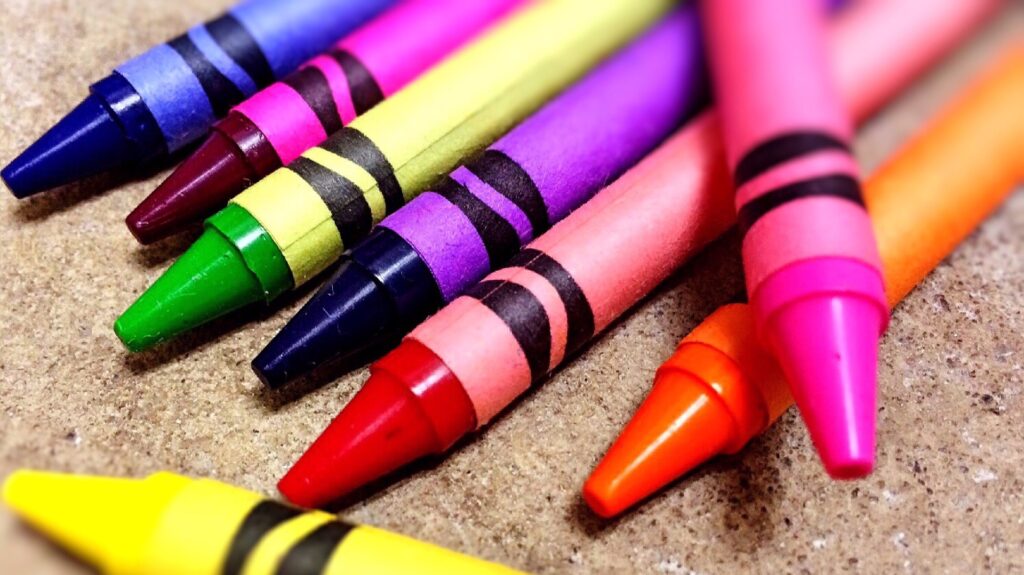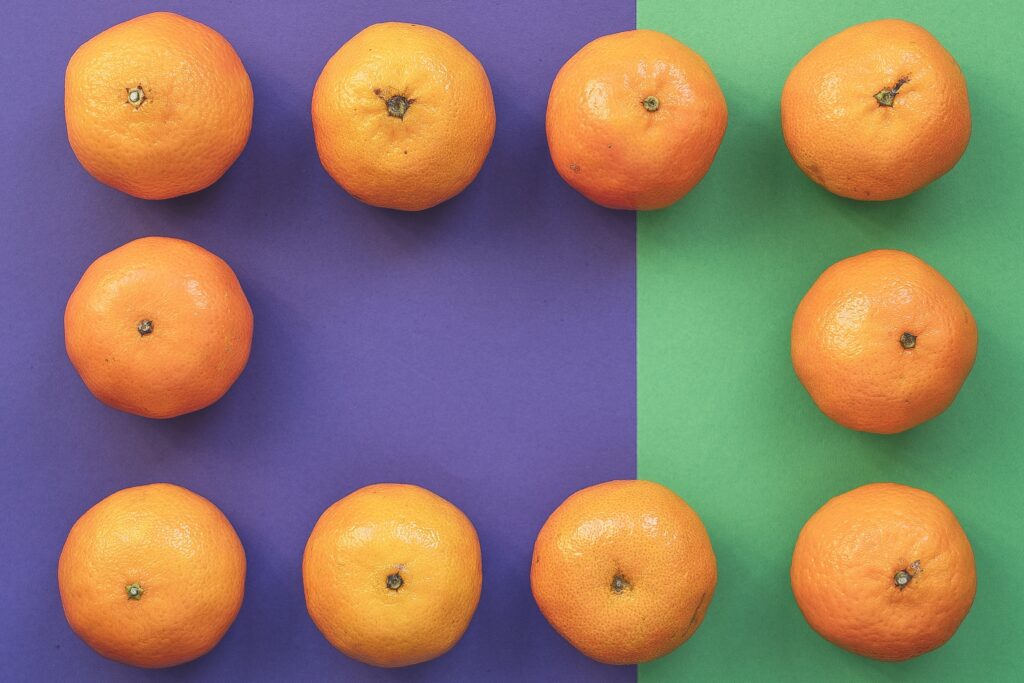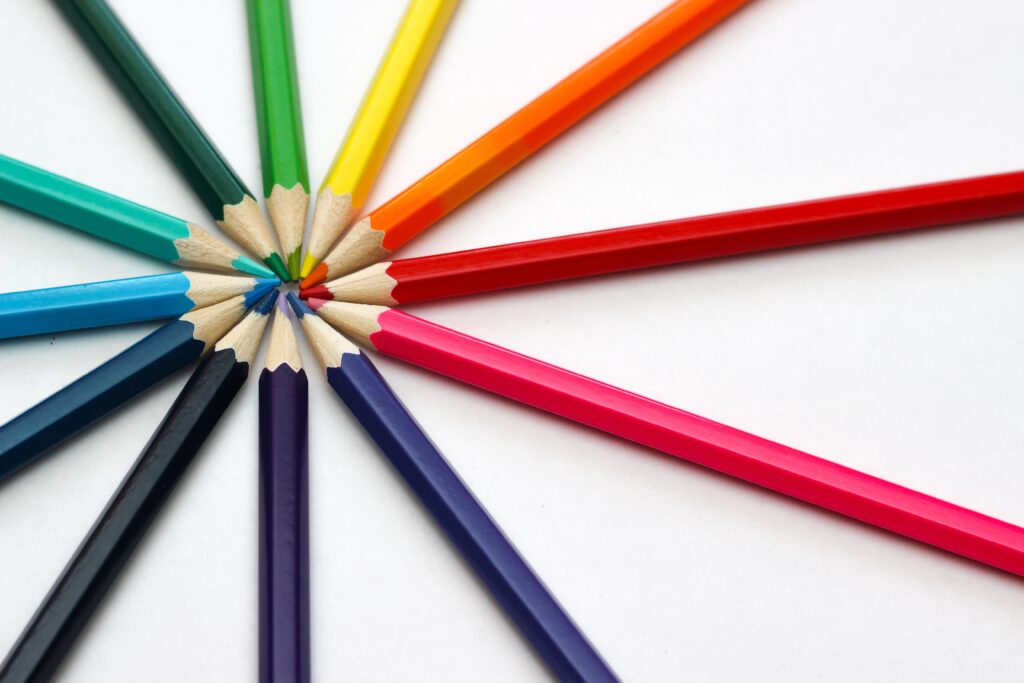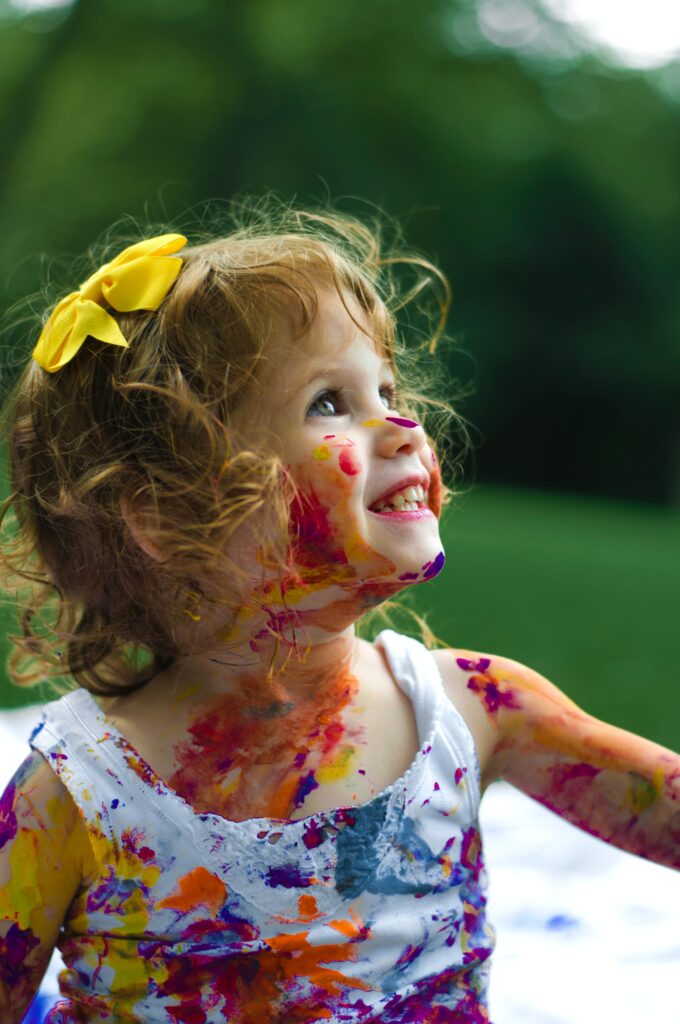
One of the most fundamental skills to teach your young child is color identification! At 3 – 6 months old, most babies can see differentiating colors; by 12 – 18 months old, toddlers can learn to distinguish colors and can begin learning the names of the colors they see!
Learning colors is a skill that can be made fun for toddlers! Here is the easiest order in which you should teach your child to identify colors!
Step 1: When teaching your toddler colors, it is best to start with primary colors: red, yellow, and blue.
- My favorite way to teach children to recognize colors is the tried-and-true method of flashcards. In my opinion, flashcards are one of the best tools to teach little minds! Children’s minds soak in what they repetitively see. Have your child repeat after you while pointing to each color.
- Colored construction paper is a great way to get children familiar with these primary colors. As you hold up the color, say its name, and have your child repeat the color’s name.
- Another idea is colored blocks. Blocks are a good choice because they usually have true colors, not mixed or muted colors. As you play blocks with your little one, use the color’s name. “I am going to put the red block on top of the blue block. What color do you think I should use next?” This causes your child to need to use the color’s name to continue playing.
Since your toddler is so young, he or she may not be able to say the names of the colors, but can identify them by bringing you the “red cup”, the “yellow block”, or the “blue stuffed animal”. Some colors can be difficult to say, especially those with an “L” sound. Yellow may be ye-whoa, blue may be bwew. It is fine to give a little encouragement to use an L sound, but be sure to acknowledge and praise that your child is giving good effort.
Once you see your child gaining familiarity with these colors, it is safe to add more colors.

Step 2: Secondary colors: purple, orange, and green.
Now that your toddler is gaining confidence identifying red, yellow, and blue, it is time to introduce the secondary colors: purple, orange, and green.
Remember, the best way to teach colors depends on your child’s age. Children as young as one year old can point to and identify differing colors even if they have not yet begun talking. They can bring you certain colored objects, point to a colored construction paper, and play color learning games!
If your toddler has started saying words, they can say the colors of the objects as they bring them to you, point to them, and play games. (See attached article “How to Encourage Your Toddler to Talk” for tips on getting your child to begin to say words … How to Encourage Your Toddler to Talk – My Brilliant Child)

Step 3: Tertiary colors: pink, grey, brown, white, and black
At this point, your child is ready to learn all beginning colors: red, yellow, blue, purple, orange, green, pink, brown, black, and white … and the combinations of mixing these colors! Let’s discuss games you can play with your children to make memorizing and identifying colors fun!

COLOR GAMES
– Bean Bag Toss
One game to play is to have children toss the bean bag into the box or container with the color on which the spinner lands. Children learn to identify the color by sight. There are so many skills children can gain from playing with bean bags such as hand-eye coordination and motor skills.
Finger Painting
Finger painting is a great hands-on activity to help children understand colors and how to mix colors to create new ones.
Color Tablets
Color tablets are a good tool to assist in learning colors. They come in three boxes and have color swatches which move progressively from primary colors and beyond, using shades of each color.
Puzzles
Puzzles are another tool that, along with teaching children color identification, improves hand-eye coordination and motor skills.
Blocks/Legos
Color sorting is a great way to use Blocks and Legos to reinforce color identification.
Teach your child to spell Color Words
My favorite way to teach children to spell color words is the tried-and-true method of flashcards. In my opinion, flashcards are one of the best tools to teach little minds! Children’s minds soak in what they repetitively see and say. Having your child repeat after you while pointing to each color word and saying each individual letter teaches both spelling and letter recognition! As your child practices pointing to and spelling each word, he or she will also be memorizing the spelling of the color word without realizing it! For fun, you can also use songs and rhymes to reinforce what your child has learned from flashcards!

This post contains affiliate links, which means I may receive a small commission, at no cost to you, if you make a purchase through a link.

